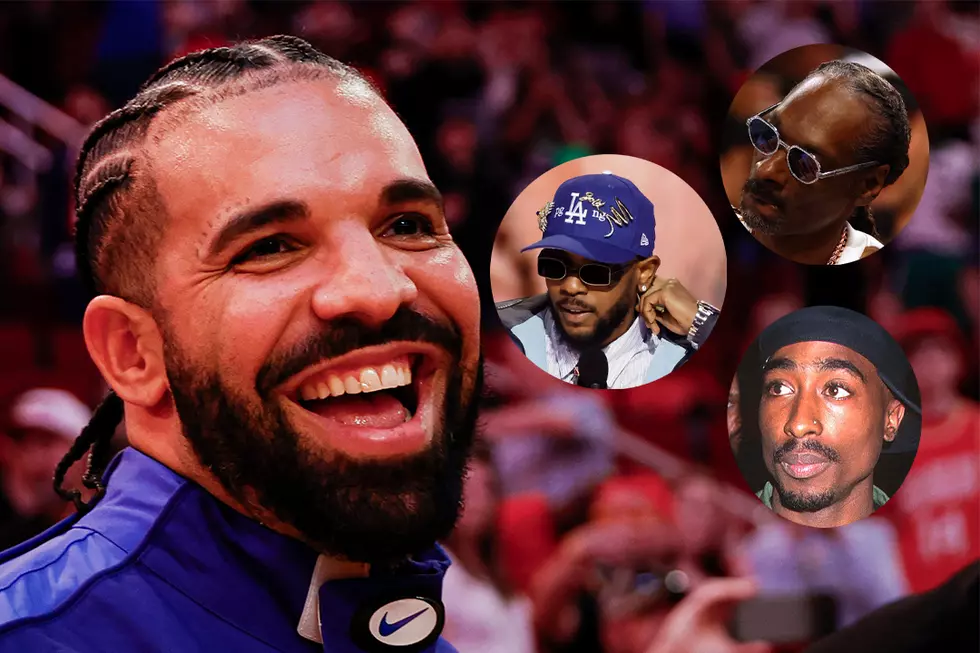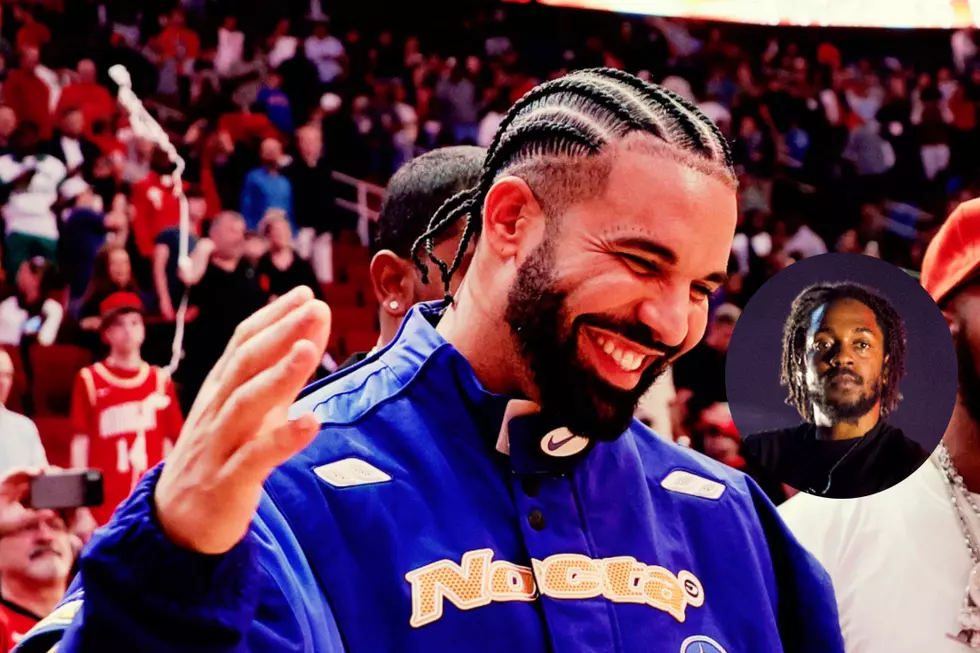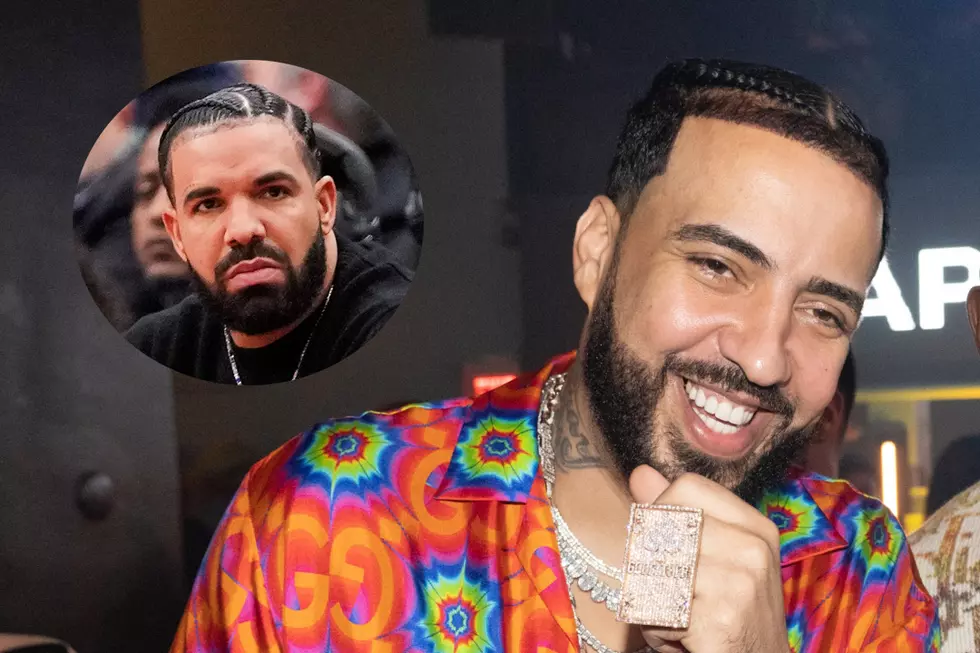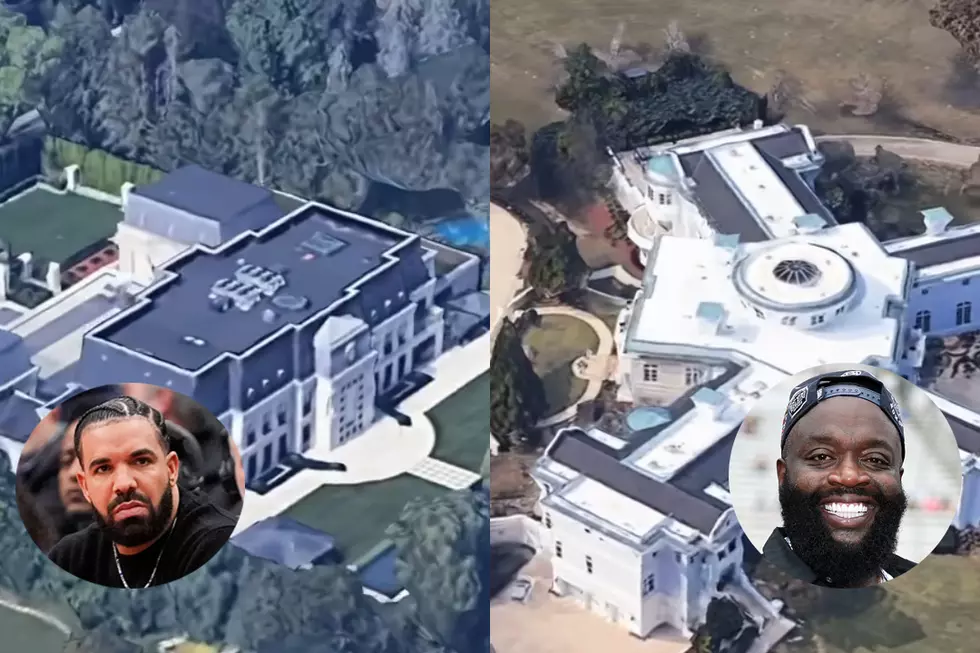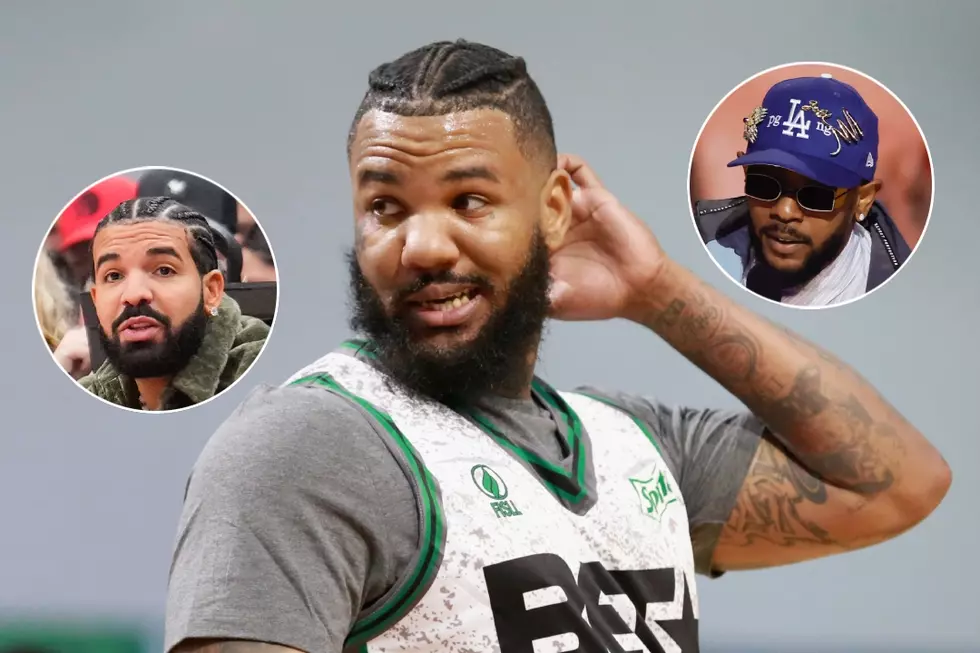![Your World & My World [May 2011 Magazine Excerpt]](http://townsquare.media/site/812/files/2011/04/kanyewestandjayzfeature1.jpg?w=980&q=75)
Your World & My World [May 2011 Magazine Excerpt]
WORDS BEN DETRICK
**THIS STORY ORIGINALLY APPEARS IN THE MAY 2011 ISSUE OF XXL ON SALE NOW**
Last summer, when Kanye West was in the throes of promoting My Beautiful Dark Twisted Fantasy, he announced via Twitter that he and Jay-Z were working on a new collaborative album called Watch the Throne. The pair have been making hits together since the heyday of Roc-A-Fella Records and Jay-Z’s classic 2001 album, The Blueprint, but this new project was potentially monumental. At present, Jay-Z has superseded rap to become a worldwide entertainment icon, and Kanye is a walking nexus of critical adulation and media attention. And so, during New York Fashion Week, in February, the duo took over a floor at the swanky Mercer Hotel in SoHo, moved in recording equipment and knocked out the bulk of the album. Kanye wasn’t talking to the media then, and few people associated with the project are willing to discuss much about the album now: “We are not authorized to speak publicly regarding the details of the record,” a member of his team told XXL.
Whatever the reasons for the wall of silence, Jay-Z and Kanye may already have discovered that Watch the Throne was simpler in theory than in practice. Last New Year's Eve, Kanye used a joint appearance at a party at the Marquee nightclub in Las Vegas to declare, “Watch the Throne coming in one week.” That one week came and went. We did hear a single in January, the Lex Luger–produced “H.A.M.,” an orchestral, melodramatic amuse-bouche that whetted the appetite but did little to satisfy the hunger for the project. After peaking at No. 23 on Billboard's Hot 100 chart, the single has seen a natural decline (at press time, "H.A.M." was at No. 95 on the chart). Not exactly disappointing, but given the magnitude of the duo, not earth-shattering, either.
None of this should come as a surprise. While the contributions of duos, from Eric B. and Rakim, to OutKast, to Mobb Deep, to UGK, prove the dynamic potential of two-man rap operations, sadly, the history of duet albums between already established artists tells a different story. Delays, confusion and uncertainty are par for the course of the recording process. Under the weight of inflated expectations and hamstrung by label politics, more often than not, full-length collaborations fail to equal the sum of their parts.
Out of all the hip-hop albums that have brought together a pair of bankable solo artists—two rappers or a rapper and a singer apply here—only Jay-Z and R. Kelly’s The Best of Both Worlds series and Method Man and Redman’s Blackout! have sold more than a million copies. Omarion and Bow Wow’s Face Off was certified at gold. Distant Relatives, from Nas and reggae artist Damian Marley, received positive reviews but lackluster sales. I Can’t Feel My Face, a duet album between Lil Wayne and Juelz Santana, resulted in a number of leaked tracks but has remained in the vault for several years. Other rumored collaborations, like Nas and AZ, Jeezy and Akon, and Lil Wayne and T-Pain, have produced little beyond hopeful whispers.
Still, with the music industry collectively clinging to the rim of an elevator shaft, there has been a surge of interest in the collaborative album. The steady decline in the viability of the multimember group has created an environment where legions of soloists are competing for attention—and joining forces with another rapper may offer an advantage. Veterans and underground acts, by virtue of their independence and willingness to experiment, have led the charge. In recent years, Kurupt and DJ Quik released BlaQKout, KRS-One and Buckshot put out Survival Skills, Masta Ace and Edo. G made Arts & Entertainment, and Keith Murray and Canibus dropped a self-titled EP as The Undergods. Last September, Tony Yayo and Danny Brown put out the Hawaiian Snow mixtape together. This month, Mack 10 and Glasses Malone joined forces on Money Music. On the mainstream side, Cash Money Records owner Birdman, who released Like Father, Like Son with his artist Lil Wayne, in 2006, has reportedly recorded full, as-yet-unreleased albums with R. Kelly and with Rick Ross. After years of seeing groups disassembled into solo acts, hip-hop is reverse-engineering itself.
Back in the day, labels occasionally mashed solo artists together into groups, but the current pairings are based more on natural chemistry, respect and the success of past single-song collaborations. Before toying with the idea of dual albums, Drake and Trey Songz made 2007’s “Replacement Girl,” Fabolous and Ne-Yo made 2007’s “Make Me Better,” and Wayne and T-Pain made “Can’t Believe It” and “Got Money,” in 2008. Few artists will have the same rapport as Redman and Method Man, guys who have been touring, shooting films and smoking pot together for over a decade, but mutual admiration is crucial. For Buckshot, part of the thrill of working with KRS-One was sharing the studio with a legend. “When it came to Kris, it was a shocking revelation that it was actually possible to happen,” he says. Buckshot cites the benefit of bringing their fan bases together, but it’s clear his primary interest was more artistic than financial. “You’d have to be equipped for KRS-One to say, ‘Aight, I’ma rhyme with you.’ Obviously, that was something that I would want in my wildest dreams.”
Keith Murray and Canibus were acquaintances for years before hooking up as The Undergods, but they spent some quality time together before recording. To build chemistry, Canibus visited Murray’s hometown of Central Islip, on Long Island, and ate at his family’s Jamaican restaurant. “We didn’t just come to the studio and rap,” says Murray.
Most rappers are comfortable jumping on tracks with other artists. (It would seem that at least 75 percent of Southern acts have guested on a DJ Khaled posse cut at some point.) But sharing artistic responsibility for an entire album is a different level of commitment. Some alpha-level stars may be unwilling to surrender partial control of their projects. Others prefer the group dynamic. “I ain’t with the solo shit unless I have to,” says Birdman, who made five albums with Mannie Fresh as a member of the Big Tymers. “I’d rather be in a group,” he says. “Some niggas feel different. Wayne, he like to do solo shit. A nigga like Ross, real rap niggas, they like that. I’ve never considered myself a rapper. I’m a game-spitter.”
**TO READ THE REST OF YOUR WORLD & MY WORLD STORY, PICK UP THE MAY 2011 ISSUE OF XXL. ON SALE NOW.**
More From XXL
